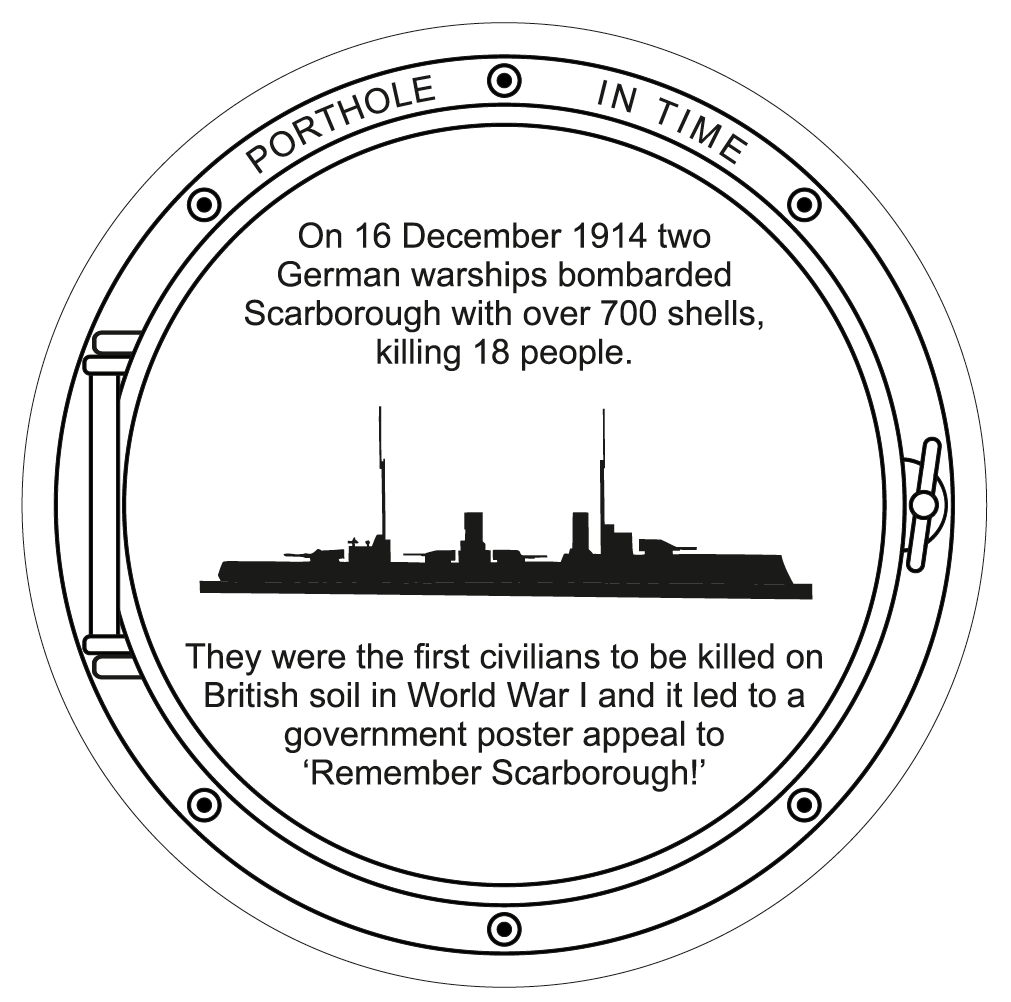
Scarborough was bombarded by the German navy in World War I. At about 8 a.m. on the morning of 16th December 1914, two German battlecruisers Von Der Tann and Derfflinger approached Scarborough from the north, through a winter dawn mist. They began to shell the town with their medium and light calibre weapons, firing some 700 shells for nearly half an hour with a short interval in the middle. At first they appeared to be targeting what could be military targets, striking the coastguard station and the disused military barracks on the Castle headland. However, targeting in poor visibility and a heavy sea swell was difficult. Soon the cruisers seemed to be firing at the town itself in a more indiscriminate manner, hitting over 200 houses, seven churches and ten public buildings. Few of the town’s streets escaped unscathed. The Grand Hotel was struck by over 30 shells, one passing through the Lighthouse tower before it exploded on the Grand Restaurant. The Lighthouse tower had to be demolished several days later, and was only rebuilt in 1931. The two battlecruisers then sailed north to bombard Whitby.
Eighteen men, women and children died in the attack on Scarborough, and many more were injured. Leonard Ellis was the first civilian to die due to enemy action on British soil in World War I. He was killed outside a chemist shop on South Street. A 15-year-old boy was killed on his way to buy a newspaper and a postman died whilst on his early morning rounds. In the most tragic incident, a mother and three children died as a result of an explosion in Wykeham St.
There was considerable panic in the town, as many believed the attack to be a prelude to a German invasion. The railway station and roads leading inland were crowded with nervous citizens wishing to escape. It is not clear why the German navy opted to target an English holiday resort. Causing civilian fear and panic would, it was hoped, undermine British morale. The German High Seas Fleet was also keen to lure the Royal Navy out onto the open seas, as they desperately needed to engage their more powerful adversary. On a more practical level, the attacks on Scarborough and Whitby were undoubtedly part of a diversionary tactic to enable the German light cruiser Kolberg to lay mines between Filey and Flamborough Head. In September 1917, Scarborough was attacked again, this time by a German submarine that fired 30 shells at navy minesweepers in the harbour and at the town itself. On this occasion three people died.